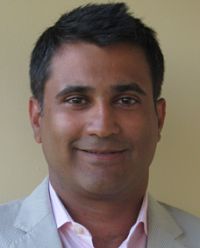 Newly minted Thomson Reuters corporate treasurer Kevan Parekh thrives on the fast pace at the $13 billion financial information company, but he started his career on a completely different track: as an automotive engineer.
Newly minted Thomson Reuters corporate treasurer Kevan Parekh thrives on the fast pace at the $13 billion financial information company, but he started his career on a completely different track: as an automotive engineer.
After four years, Parekh wanted to know more about the business side of the car industry so he headed for an M.B.A. at the University of Chicago. A summer internship led him to treasurer's office of General Motors, and after he graduated in 1999, he spent 10 years there.
Parekh joined Thomson Reuters in 2009 and just a month ago was promoted to his new post after serving as vice president of finance in the company's $5.5 billion professional division.
Parekh says his two years as regional treasurer in Europe for GM, in 2007 and 2008, were extremely challenging, as he worked to help keep the company afloat and get funds from the German government to do the job to the tune of 1.5 billion euros.
“We had to be very creative about how to maintain stability and restructure the business, with minimal resources,” he recalls. The experience was excellent training for the continuing lean business environment where uncertainty is the new constant. On Parekh's list of what-ifs to consider now—fractures in the eurozone.
Can you talk more about your challenging time in Europe?
about your challenging time in Europe?
A lot of things were happening at one time. The European business was affected by the crisis, and it had a big impact on the company's liquidity. You had to learn how to make decisions very quickly, and you had to keep the big picture in mind, because you didn't have time to over-analyze things.
We had to act on some alternatives with the Saab business, and go through a restructuring process and put it up for sale. And we had to figure out a way to get money from the German government.
We went through a significant restructuring and a difficult period in the company's history. Trying to work through all of that was very complicated and very difficult, but it was an amazing learning experience.
Was that your first experience working overseas?
It was. The first year was interesting, because it was all about growth, in Eastern Europe, for example. We were exploring new markets and building the Chevrolet brand. The second year was all about the financial distress aspect of things. It was kind of an interesting turn.
How does the restructuring mind-set compare with growth mode?
Any time you get involved in a restructuring, you quickly come to understand how a business really works. You have to get into the heart of what's causing the issues and learn how to fix them. You really understand what the business model is and what the key drivers are.
What was it like going from manufacturing to information services?
The one thing that has struck me is the difference in the market itself. Information services are a bit more dynamic, because tech evolves, because customer needs evolve, and software evolves at such a rapid pace. In the manufacturing area, there's definitely innovation and things change, but not at the same pace, and not so significantly.
As a consequence of that, business models have to adapt quickly, and the structure of the organization has to adapt. You see more fluid changes there, on a regular basis.
What has been your most rewarding project so far?
It's hard to pick just one thing, but recently, I helped [professional division CFO] Stephane Bello and the management team think about the portfolio, in a challenging market environment, and discover opportunities for growth. We did a lot of the analytics and thinking through that from an economic standpoint, which allowed us to make some key investments in a difficult environment, that serve the company well now from a growth standpoint. That was a really interesting and rewarding exercise, because it had elements of strategy, and elements of finance. It was an interesting way to think about the future of the business.
What do you like best about your job?
The culture of the company has been great. It's a performance-driven culture, oriented to growing the business and driving returns. It's a great experience to be part of that. I love that we're in a very diverse set of businesses and in a diverse set of markets. I like the variety of the things you get to work on. The complexity of the work is interesting; the people I get to work with are really terrific.
How do you keep the big picture in mind day-to-day?
It's never easy, but you try to focus on things you need to get done in the near term. There are things that have to happen daily, especially in treasury. You also need to think about managing all the uncertainty and how the economic environment can impact your business, in terms of access to capital, funding needs, and business model, for example.
Being able to provide some thought leadership around some of that uncertainty for the management team is important. You're not always going to know all the answers, but it's good to be able to help facilitate the debate, and that's where the finance team and the treasury team can add some value. An example right now is thinking about what happens if there's a risk around countries leaving the euro. Thinking through that has been useful and instructive.
For the complete 2011 40 Under 40 list, see Ready to Take Charge.
You can find more coverage of the 40 Under 40 list here.
© Touchpoint Markets, All Rights Reserved. Request academic re-use from www.copyright.com. All other uses, submit a request to [email protected]. For more inforrmation visit Asset & Logo Licensing.



